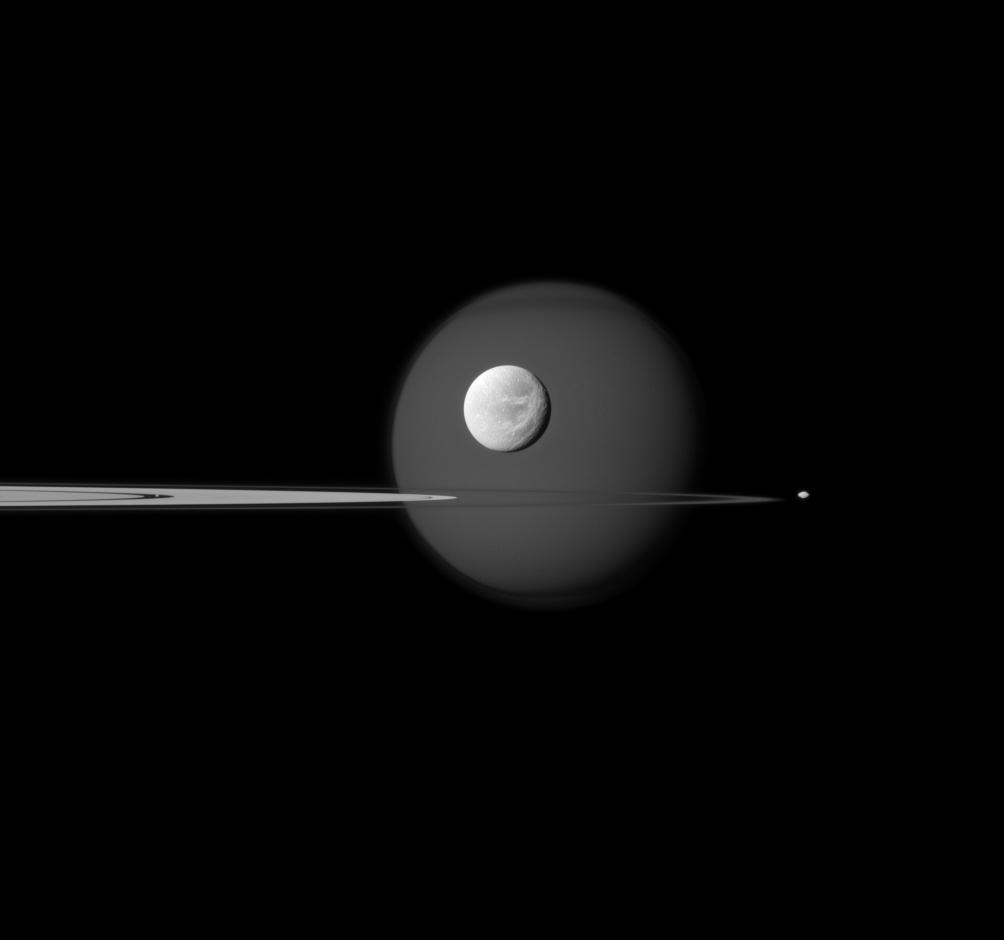In, Around, Beyond Rings

| PIA Number | PIA14579 |
|---|---|
| Language |
|
A quartet of Saturn's moons, from tiny to huge, surround and are embedded within the planet's rings in this Cassini composition.
Saturn's largest moon, Titan, is in the background of the image, and the moon's north polar hood is clearly visible. See Haze Layers on Titan to learn more about that feature on Titan (3,200 miles, or 5,150 kilometers across). Next, the wispy terrain on the trailing hemisphere of Dione (698 miles, or 1,123 kilometers across) can be seen on that moon which appears just above the rings at the center of the image. See Dione's Icy Wisps and Highest Resolution View of Dione to learn more about Dione's wisps. Saturn's small moon Pandora (50 miles, or 81 kilometers across) orbits beyond the rings on the right of the image. Finally, Pan (17 miles, or 28 kilometers across) can be seen in the Encke Gap of the A ring on the left of the image.
This view looks toward the northern, sunlit side of the rings from just above the ringplane.
The image was taken in visible blue light with the Cassini spacecraft narrow-angle camera on Sept. 17, 2011. The view was obtained at a distance of approximately 1.3 million miles (2.1 million kilometers) from Dione and at a Sun-Dione-spacecraft, or phase, angle of 27 degrees. Image scale is 8 miles (13 kilometers) per pixel on Dione.
The Cassini-Huygens mission is a cooperative project of NASA, the European Space Agency and the Italian Space Agency. The Jet Propulsion Laboratory, a division of the California Institute of Technology in Pasadena, manages the mission for NASA's Science Mission Directorate in Washington. The Cassini orbiter and its two onboard cameras were designed, developed and assembled at JPL. The imaging team is based at the Space Science Institute, Boulder, Colo.
For more information about the Cassini-Huygens mission visit http://saturn.jpl.nasa.gov or http://www.nasa.gov/cassini . The Cassini imaging team homepage is at http://ciclops.org .
Credit: NASA/JPL-Caltech/Space Science Institute
